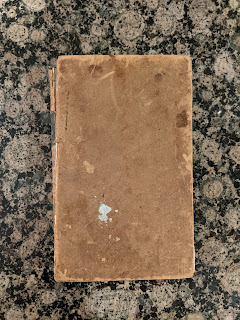What Does an Algebra Textbook from 1860 Look Like? Stoddard and Henkle's "University Algebra"
Recently, my brother and I were driving near Harrisburg, PA, when we stumbled across a used book store on the side of the street. In this wonderful little store, I found something I hadn't seen before: math textbooks from the pre-civil war era. A few were arithmetic, and just one was on algebra. Being a sucker for old textbooks, especially on math and physics, I paid $40 for the book, and today we can take a look at what's inside.
The cover is in surprisingly good condition, as are the pages, considering the age. At this age, you might expect 'red rot' to set in, and the pages to be covered in 'foxing', or faint red spots and marks. But as we'll see, many of the pages are in good shape.
One of my favorite parts of this books is shown above. The textbook is signed, by one Carry B. Lambert, April, 1860. It's amazing to own something that once belonged to a girl in school who was living on the brink of the Civil War.
It's interesting to compare this textbook to another published 30 years later, Hall and Knight's Higher Algebra (1891). In fact, Hall and Knight (still used today, though some of the notation can be a challenge at first) covers very similar material, but modifies its coverage to include more general results, and special cases of certain topics. For example, the theory of quadratic equations is extended to less common equations involving roots and transcendental functions which may, by change of variables, be solved as quadratics. Another example is the inclusion of the multinomial theorem, and generally more extensive coverage than that found in Stoddard and Henkle.
In the rest of this post, you'll find some images from Stoddard and Henkle, showing the table of contents, and a random page from the middle of the book. Considering the books age, it was handled as little as possible.











Comments
Post a Comment